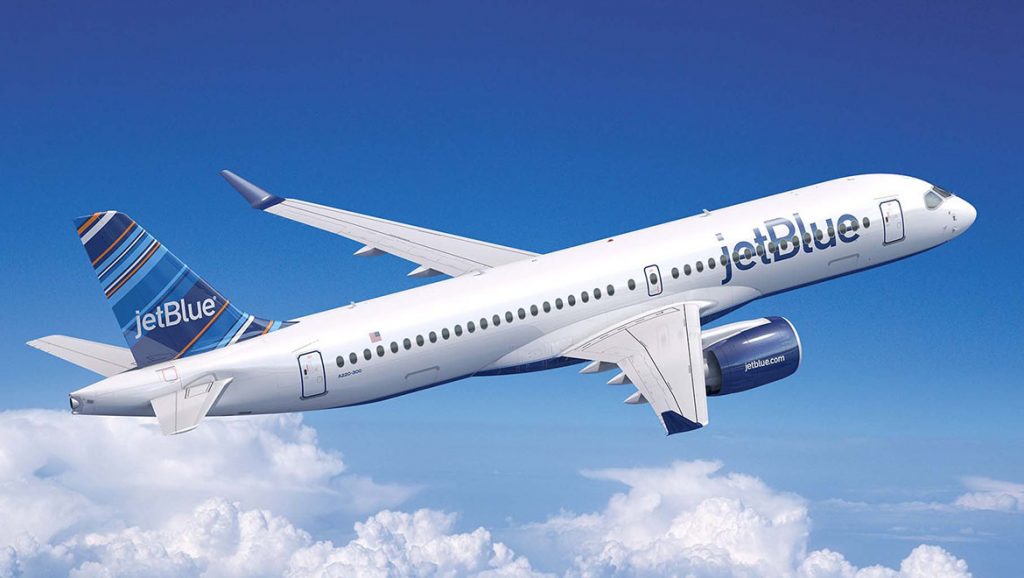
Despite the challenge presented by the COVID-19 pandemic and crisis, JetBlue Airways has managed to accelerate its Airbus A220 deliveries and renewed its commitment to the aircraft. Here’s why.
Air travel demand plunged earlier this year due to the COVID-19 pandemic, and it isn’t expected to recover fully for years. In response, airlines have negotiated aggressively with Boeing and Airbus to defer aircraft deliveries in order to relieve some of the pressure on their balance sheets.
JetBlue Airways has been no exception. Entering 2020, the leisure-focused airline planned to take delivery of at least 46 – and possibly as many as 56 – Airbus A321neos between 2020 and 2022.
After renegotiating its delivery schedule with Airbus, JetBlue now expects just 24 A321neo deliveries over that period (including the long-range A321LR variant).
Nevertheless, JetBlue remains as eager as ever to receive the 70 Airbus A220s it has on order. It has even accelerated its A220 delivery schedule modestly during 2020. Let’s see why.
An excellent E190 replacement
In 2018, JetBlue announced that it would order 60 A220-300s to replace its Embraer E190 fleet on a one-for-one basis. It subsequently ordered another 10 last year. The A220s are expected to seat 140 passengers while having trip costs roughly in line with the 100-seat E190. The transition from the E190 to the A220 will thus reduce JetBlue’s unit costs significantly.
The biggest drawback of the A220-300 relative to the E190 is that its extra seating capacity makes it less well suited to operating high-frequency business routes. However, that’s less of a drawback right now. Airlines have slashed flight frequencies on key business routes this year due to extremely weak business travel demand.
Thus, JetBlue could potentially offer fewer flights using the larger A220-300 on certain business routes, with minimal risk of losing customers to rivals offering more frequent service. This would allow it to capitalise on the type’s low unit costs without suffering a big unit revenue penalty from flooding the market with capacity. During JetBlue’s Q1 earnings call, CEO Robin Hayes told investors that the key Boston-Washington route would be a great candidate for A220 service in 2021 for this very reason.
The ideal aircraft for long-and-thin routes
The Airbus A220-300 is also a great aircraft for long routes with relatively modest demand, due to its low trip costs and long range. Such long-and-thin routes are an important niche for JetBlue, particularly in its new focus city operation at Los Angeles International Airport (LAX).
Earlier this month, JetBlue announced seven new routes at LAX, including three transcontinental routes – to Charleston, South Carolina; Richmond, Virginia; and West Palm Beach, Florida – that had no nonstop service previously.
The airline has already demonstrated success operating transcontinental routes that rivals have shied away from. For example, for the past four years, JetBlue has offered the only nonstop service between LAX and Buffalo, New York. However, all of these routes would probably be significantly more profitable with an A220-300 than with JetBlue’s A320-family jets. The arrival of the A220s could also encourage JetBlue to launch new routes that wouldn’t be viable with any of the planes currently in its fleet.
Article courtesy of Airlinerwatch










